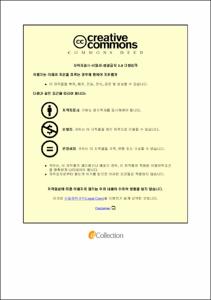병리적 병기 N1 유방암에서 최적의 방사선 치료범위
- Abstract
- Purpose: To evaluate the treatment outcomes and recurrence pattern of clinical N0 (cN0) breast cancer patients who were assessed as pathological N1 (pN1) after breast-conserving surgery and to determine the appropriate radiation treatment field accordingly.
Materials and Methods: We retrospectively analyzed pN1M0 breast cancer patients who were treated with breast-conserving surgery and adjuvant radiation therapy (RT) between January 2012 and July 2015. We divided the patients into two groups, the SNB group and the ALND group. To compare treatment outcomes and complications, 40 patients treated with third field RT (whole breast RT + regional nodal irradiation) in the ALND group were excluded. A total of 289 breast cancer patients were included in this study. Among these patients, 130 patients underwent axillary lymph node dissection (ALND) and 159 patients underwent sentinel lymph node biopsy (SNB) only. In the SNB group, 81 patients (51%) received whole breast RT and 55 patients received High-tangents RT (35%). Only 14% (n=23) of patients in the SNB group treated with third field RT. The dose to the whole breast was usually 50 Gy at 2Gy per fraction and all patients received an electron boost to the tumor bed (10-15 Gy in 4-6 fractions). Adjuvant chemotherapy was given to 81% of patients. All patients with positive hormone receptor received hormone therapy. The primary end point was regional recurrence free survival (RRFS). Secondary end points were overall survival (OS), disease-free survival (DFS), and breast cancer-related lymphedema (BCRL).
Results: The median patient age was 50 years (range, 27-78 years). The proportion of patients with positive estrogen receptor (ER) and those with Ki-67 less than 14% in the SNB group were significantly lower than that in the ALND group. And the proportion of pN1mic patients was higher in the SNB group. Patients included in SNB group were analyzed according to radiation treatment field. Compared to patients who treated with other types of RT (whole breast RT, high-tangents RT), patients treated with third field RT had more high risk features. At the median follow-up of 73 months, there were 6 cases of IBTR and 3 cases of regional recurrence (axillary and supraclavicular lymph nodes). There were 10 cases of distant recurrences. Among the regional failure cases, 1 patient underwent SNB and 2 patients underwent ALND. In SNB group, regional recurrence was observed in one patient treated with standard tangential field RT. Regional recurrence was not observed in the patients who underwent high-tangents RT or third field RT. The 5yr RRFS were 99.2% in the SNB group and 98.2% in the ALND group (p=0.590). There was no significant difference in 5yr RRFS according to type of radiation treatment field or molecular subtype. The 5yr OS and the 5yr DFS were also not statistically different (OS 99.4% vs. 99.2%, DFS 94.1% vs. 93.4%). Patients in the ALND group had significantly higher rates of BCRL (1.9% vs. 15.1%, p<0.001).
Conclusion: In cN0/pN1 breast cancer patients, ALND did not improve OS or DFS but increased the rate of BCRL. Risk-adapted axillary coverage for cN0/pN1 patients who underwent BCS and SNB was helpful in maintaining excellent regional control rate without increasing treatment associated lymphedema.
- Issued Date
- 2019
- Awarded Date
- 2020-02
- Type
- Dissertation
- Alternative Author(s)
- Ji Hwan Jo
- Affiliation
- 울산대학교
- Department
- 일반대학원 의학과의학전공
- Advisor
- 김수산
- Degree
- Master
- Publisher
- 울산대학교 일반대학원 의학과의학전공
- Language
- eng
- Rights
- 울산대학교 논문은 저작권에 의해 보호받습니다.
- Appears in Collections:
- Medicine > 1. Theses (Master)
- 파일 목록
-
-
Download
 200000284869.pdf
기타 데이터 / 755.97 kB / Adobe PDF
200000284869.pdf
기타 데이터 / 755.97 kB / Adobe PDF
-
Items in Repository are protected by copyright, with all rights reserved, unless otherwise indicated.